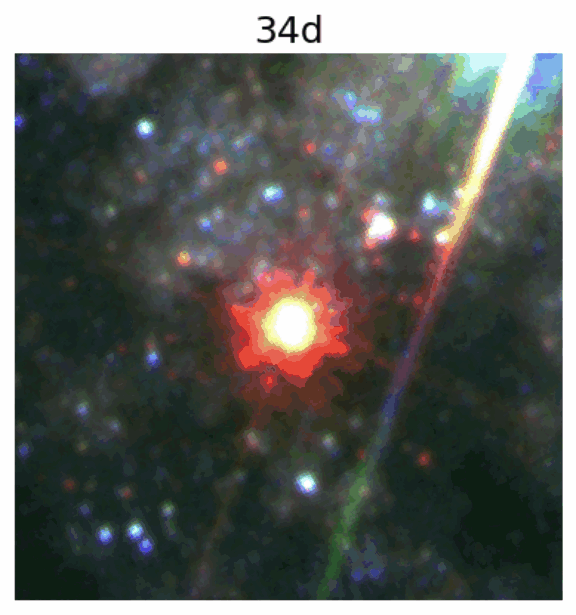In 2016, astronomers saw a supernova going off in a nearby galaxy. Over the following years, they saw the light of this event interacting with the interstellar dust, creating light echoes of the powerful explosion. This is a very rare phenomenon, and the fact that Hubble was able to capture it is fantastic.
The first light echo was seen just 34 days after the supernova’s peak brightness in the B-band filter (which filters light at wavelengths covered by the blue portion of the visible light spectrum). The researchers then tracked it multiple times up to 578 days later, and then once again 1,991 days later when a second light echo was visible, as well as two more outer rings.
“The data set is remarkable and enabled us to produce very impressive colored images and animations that exhibit the evolution of the light echoes over a five-year period. It is a rarely seen phenomenon previously only documented in a handful of other supernovae,” lead scientist Professor Maximillian Stritzinger of Aarhus University, Denmark, said in a statement.

Images of the light echoes. Image credit: NASA/ESA/STScI/Stritzinger et al.
The light echoes revealed that there are four distinct sheets of interstellar dust around the supernova, an insight that astronomers would unlikely be able to gather otherwise. The team believes that these dust structures resemble Swiss cheese, with dust structures surrounding large holes.
“The blast wave from this powerful supernova explosion is racing outwards at over 10,000 kilometers per second. Ahead of this blast wave is an intense flash of light emitted by the supernova, and this is what is causing the expanding rings we can see in the images. Supernovae are of interest as these cosmic explosions produce many of the heavy elements such as carbon, oxygen and iron, which make up our galaxy, stars and our planet,” added co-author Dr Lluis Galbany, of the Institute of Space Sciences, Barcelona.
The supernova took place in Centaurus A, a moderately nearby galaxy. It is located between 10 and 16 million light-years from Earth. It has an active supermassive black hole, 55 million times the mass of our Sun, that has launched a massive jet into intergalactic space.
“Centaurus A is a huge elliptical galaxy. These are mostly quiet, dust free and without younger stars prone to go off as supernovae, but Centaurus A is obviously different. It is a strong radioastronomical source and it contains prominent dust lanes with new stars forming within. This is a sign that it has “recently” gobbled up another smaller spiral galaxy, and matters have not yet settled down, as it might in a couple of hundreds of millions of years. Observing the development of these light echoes will help us gain more insight into these violent galaxy collisions,” Professor Stritzinger added.
The study was published in The Astrophysical Journal Letters.
Source Link: Light Echoes Of An Exploding Star Captured By Hubble